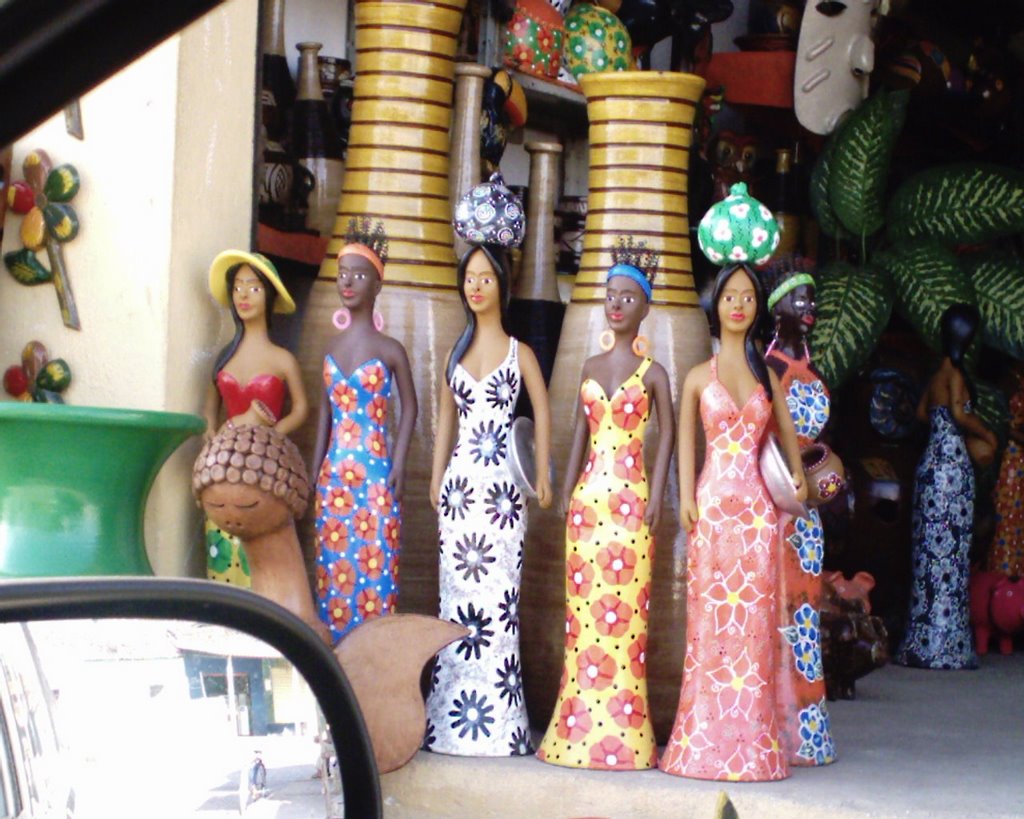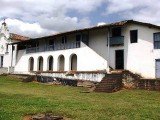Este post também está disponível em:
Português
English

The cities of the Zona da Mata of Pernambuco were born around the large mills and mills of sugar cane and grew structuring themselves to provide products and services required by the southern sugarcane complex.
The Zona da Mata is a region of Atlantic Forest on the coast of Pernambuco.
The activities of the cities in the Zona da Mata of Pernambuco are predominantly rural, and the centres of convergence of rural production have always been the mills and not the cities.
The latter did not function as warehouses and did not develop their own dynamics, living to fulfil the needs of the mills and the people involved with them.
This explains why the cities did not develop or grow. The largest still have urban populations of up to 60,000 inhabitants, with Carpina, Palmares, Timbaúba, Escada and Goiana standing out.
The exception is Vitória de Santo Antão, whose population is close to 100,000.


Vicência em Pernambuco - Guia de Turismo03:04

Nazaré da Mata a beleza dos Maracatus01:53

Artesanato de Tracunhaém

Rota dos Engenhos na Zona da Mata de Pernambuco12:50

Engenho Poço Comprido em em Vicência PE
See also Sugar mills around Porto de Galinhas
Main tourist cities of Zona da Mata PE
1. Tracunhaém
The striking features of the identity of the town of Tracunhaém, located 63 kilometres from Recife, were inherited from the indigenous people.
To begin with, the name, which means “ant pot”.
According to legend, to escape the Portuguese, the Indians of the region climbed the Trapoá mountain range, which from a distance looked like a container full of insects.
The other heritage: the art of pottery, practised by the natives. The old potteries were transformed into workshops and multiplied, so that Tracunhaém became known as “the city of clay crafts”.
The fame of workshops such as Nuca’s and Zezinho’s has gone beyond the borders of the place, where an Artisan Production Centre operates. To get to Tracunhaém from Recife, take the BR-232 towards Caruaru and from there the BR-408. The roads are poorly signposted.
1.1 ATELIÊS
Due to illness, Manuel Borges da Silva, Seu Nuca, stopped working some years ago. However, his most famous creations, such as the lions with polka-dot manes and the Dondoca doll, continue to be produced by his children and granddaughter.
The studio represents the town’s tradition, where ceramics supports entire families (118 Rua Manoel Pereira de Morais).
The same role is played by the Zezinho workshop, where José Joaquim da Silva works on the production of life-size saints.
During the Christmas period, these pieces are usually found in Recife’s shopping centres at much higher prices (Av. Desembargador Carlos Vaz, 85, Centro).
Santos are also the speciality of the Maria Amélia atelier, which sells pieces by artisan Maria Amélia da Silva (praҫa Costa Azevedo, 76).
1.2 ARTISANAL PRODUCTION CENTRE
It brings together apprentice artisans and professionals who do not have their own studio. Maintained by the state government, the centre sells the work of its 45 participants and holds courses related to handicrafts (praҫa Costa de Azevedo, s/n).
2. Vicência
The town of Vicência, 87 kilometres from Recife and accessed via PE-74, was born from an old rural property and was a district of neighbouring Nazaré da Mata until 1891.
Its great attraction is its rich historical heritage: on its lands there are more than fifty mills, examples of different moments of Northeastern architecture.
Many of them, still in operation, combine historical interest with the possibility of tasting handmade cachaças.
2.1 ENGENHO POÇO COMPRIDO

The beginning of the settlement of the municipality of Vicência dates back to the eighteenth century, being consolidated from 1850 when, in sugarcane production lands, the owner Vicência Barbosa de Melo had a chapel built under the invocation of Sant’Ana near her residence.
Situated in a strategic location in the passage of the village of Goiana, the town was expanding, marking at this time the history of Pernambuco, when it served as a refuge for Frei Caneca in the context of the Confederation of Ecuador, in 1825. In 1879, it became a parish, was elevated to the category of village in 1891 and, in 1928, gained its definitive autonomy as a municipality.
The Engenho do Poço Comprido, 12 km from the municipal seat, is typical of the first complexes built in Brazil and has unique remains in the Pernambuco region, such as the pillory and the veranda of the big house.
An internal passage connects the second floor of the big house with the choir and tribunes of the chapel, allowing direct access for the owners and, by extension, ensuring hierarchical separation between masters, labourers and slaves.
The chapel has a front façade with Baroque features, two side altars and a high altar with a wooden ceiling and fresco. The architectural volume composed of these two buildings was recognised as built heritage by the National Historical and Artistic Heritage Institute in 1962.
2.2 ENGENHO ÁGUA DOCE
Cachaça Engenho Água Doce is produced in the municipality of Vicência, on the banks of PE 74, Km 10 – Zona da Mata Norte de Pernambuco, 87 km from Recife. Its producers are members of the Andrade Lima Family, which owns the place.

The mill acquired more than a century ago by the family was a producer of raw sugar, rapadura, honey and cachaça. Until 1958 the mills were in activity, until for financial reasons the business stopped.
In 2003 they restarted the production of artisanal cachaça, seeking to develop a product with the tradition of the Andrade Lima family and with the principle of quality. All production complies with quality criteria. In 2006 they started the production of liqueurs, using cachaça and tropical fruits, produced in the mill and region;
3. Passira – the city of embroidery
In Passira, 90 kilometres from Recife, the main source of income for families is embroidery. Everywhere – on the pavements, in front of the houses, in the shops and farms – the scene is repeated: comadres chat and embroider, while the men take care of the trade of towels, sheets, shirts and other linen articles.
Every year, from 7 to 9 October, the Embroidery Fair takes place in Passira (Rua da Matriz), where embroiderers exhibit and sell their delicate confections.
4. Lagoa do Carro
The name Lagoa do Carro comes from an alleged accident that occurred in ancient times: an ox cart fell into the local pond.
Lagoa do Carro, located 61 kilometres from Recife (10 kilometres via PE-90 after the Carpina interchange), is known both for its tapestry makers, who started an intense production about thirty years ago, and for the Cachaça Museum, whose creator has already appeared in the Guinness book.
4.1 TAPECEIRAS
A large shed on the edge of the PE-90 brings together the work of the little more than 100 women who make up the Association of Tapeceiras of Lagoa do Carro (PE-90, km 8), which also accepts orders from other states, as well as the Marina Artesanato shop, which sells pieces from various tapeceiras (km 8 of PE-90).
The union of the tapestry makers of Lagoa do Carro led to the creation of the Arte Nossa Cooperative, which today has 25 members. Together with the Association, it acts as an intermediary between the artisans, government institutions and companies organising events and fairs (km 8 of PE-90).
4.2 MUSEUM OF CACHAÇA
In 1986, when José Moisés de Moura entered a supermarket in Brasília, he was impressed by the number of brands of cachaça available. He bought the twenty he found there and started a collection that gave rise to the Cachaça Museum.
Inaugurated in 1998, its collection placed the creator’s name in Guinness in 2000 as “the largest collector of cachaças in the world”.
In the second half of 2007, there were 8038 brands, from all Brazilian states – Minas leading the way – and twenty countries. The museum reserves two for the collection and one for tasting and shopping. Chácara Girassol, s/n, rural area.
5. Carpina
In the city of Carpina, self-proclaimed “capital of the Zona da Mata”, trade is strong and traditions remain solid.
One of them is the theatre of puppets, called mamujengos in Pernambuco – a name resulting from the combination of the words “hand” and “molenga”.
The city, 9 kilometres from Tracunhaém and 49 from Recife (accessed by BR-408, towards Caruaru), is also known for the Vaquejada, the São João festivities, the unusual race of donkeys and the Cavalgada, held in the interior of the mills.
5.1 MAMULENGUEIROS
Much of Carpina’s fame as the “city of mamulengos” comes from the production of Antônio Elias da Silva, Saúba, whose magnificent pieces can be seen at the Museu do Mamulengo, in Olinda, and at the Museu do Homem do Nordeste, in Recife.
Besides him, the mamulengueiros Adel, Bibil, Pindoca and Miro stand out, artisans who sell their dolls in the city and to hotels in the Northeast and Southeast of the country, in an activity responsible for the livelihood of entire families.
5.2 VAQUEJADA, CORRIDA DE JEGUES E CAVALGADA
The aim of the Vaquejada, an event that takes place every year during the month of May, is for the rider to bring down an ox by pulling it by the tail. Because it involves larger animals and generous prizes, the contest usually attracts a more economically favoured public – unlike the jego race, held in September, which is established as a more popular festival.
It is a competition similar to a horse race – except that the donkeys are the ones who get ready to start. In November, the Cavalgada is another traditional festival, in which about 600 mounted men ride through the countryside of the mills for a day.
One of the estates is in charge of providing lunch for the riders.
6. Nazaré da Mata
The city of Nazaré da Mata is 65 kilometres from Recife and accessed by the BR-408, the municipality stands out for preserving the roots of rural maracatu, a folklore that emerged in the region in the 19th century as a result of the fusion of different folkloric manifestations – bumba-meu-boi, pastoril, cavalo-marinho, caboclinho and folia-de-reis.
Today, the city has eighteen groups of up to two hundred components. They all mix music, dance, costumes and characters from the Northeastern culture.
The orchestra that leads the players includes instruments such as the zabumba, the surdo, the tarol, the cuíca, the gonguê, the gamá, the trumpet, the clarinet and the trombone.
The celebration is also enlivened by loas, improvised verses recited by the master. You can enjoy this popular tradition in Nazaré at Carnival and also at the Maracatus Meeting, held every year at the end of November in the town’s central square.
In addition, folklore groups perform during events organised by the City Hall.



















